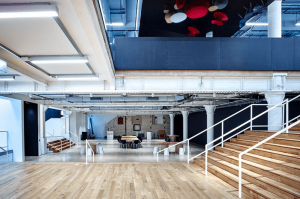All around the world you can see old, decaying pieces of commercial architecture. Many of these properties will have been thriving at one point or another. However, they are empty now because either the business did not survive or had to move to another property. In many cases the building did not last due to the fact that the design could not meet the changing needs of the business. Continue reading
Making the most of the floorspace in commercial architecture
The amount of floorspace in a building can have a direct impact on its value. This can be even more obvious when it is commercial architecture in a busy city or prime location. Whether it is a shop, an office, or any other type of property, you will want to maximise the space. That will give you more room to play with to satisfy your needs. Continue reading
Deciding on the right flooring for commercial buildings
 When you design commercial architecture you need to think about all the details. Your focus should be on creating spaces that look and feel great. They should also be areas where people can work and shop in comfort. One thing that can have a big impact here is the flooring. There are lots of options, so you need to choose materials that tick all the right boxes. Continue reading
When you design commercial architecture you need to think about all the details. Your focus should be on creating spaces that look and feel great. They should also be areas where people can work and shop in comfort. One thing that can have a big impact here is the flooring. There are lots of options, so you need to choose materials that tick all the right boxes. Continue reading
Why are high ceilings good for commercial architecture?
Most modern pieces of commercial architecture you see today will have high ceilings. It is a very common feature of these properties, whether it is a restaurant, an office, or a shop. However, you may be wondering why it is so important. Some may even view this as wasting space. Below we will take a look at why this type of ceiling is the best choice. Continue reading
The transformation of King’s Cross
London is home to some of the most impressive public, domestic, and commercial architecture in the world. However, the city is very large. That means there will always be some spots that need some regeneration or new developments. For years King’s Cross was one of them. Today though, it is a completely different destination. The transformation in the last decade has been incredible. Continue reading
Designing a flagship store
Retail stores say a lot about a business. As a result it is important to design them properly. However, designing a flagship store can be trickier. This is a key piece of commercial architecture but is more than a simple shop. It can also be a vital link in the retail chain and a way to promote the brand. Continue reading